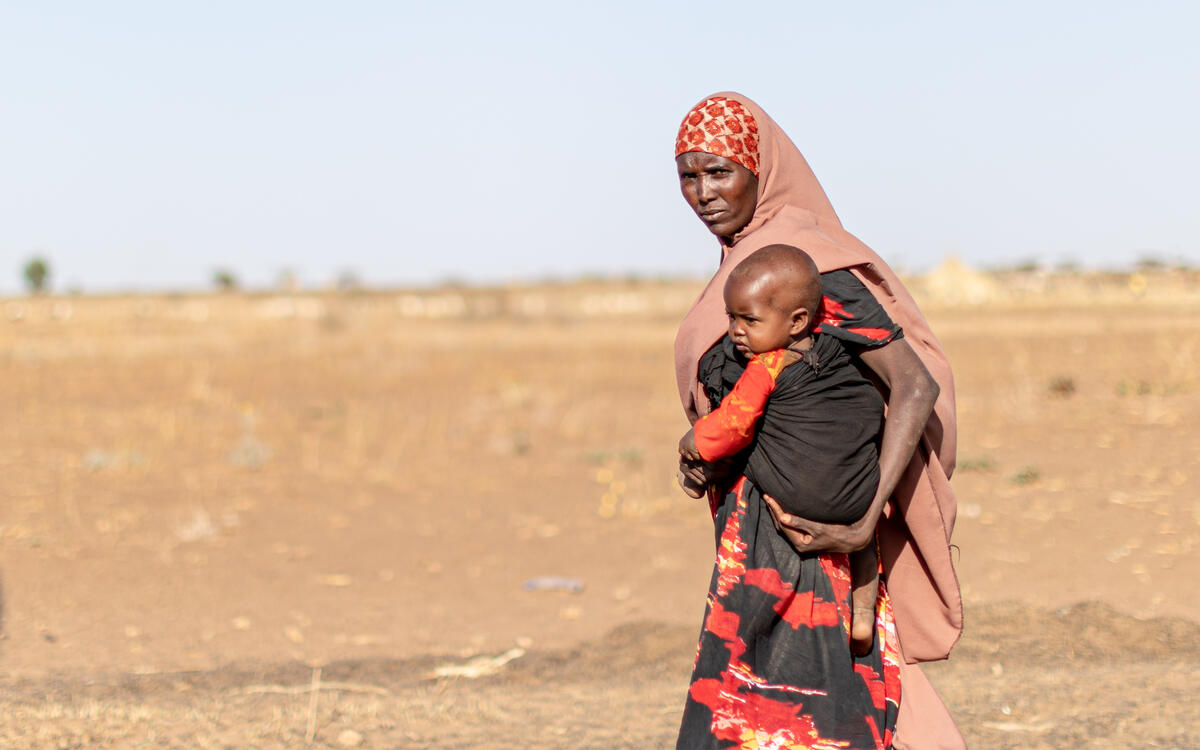Mid-Year Trends 2022
Mid-Year Trends 2022

Two Ukrainian sisters and their family reach safety in Poland, heading westwards towards Katowice.
Forcibly displaced populations*
At the end of June 2022, an estimated 103 million people have been forcibly displaced from their homes due to persecution, conflict, violence, human rights violations and events seriously disturbing public order.
This is an increase of 13.6 million (+15 per cent) compared to the end of 2021, more than the entire populations of Belgium, Burundi or Cuba.
As of mid-2022 an estimated 1 in every 77 people worldwide were forcibly displaced, more than twice as many as a decade ago (1 in 167 in 2012). UNHCR’s assessment indicates that the number of people forcibly displaced will continue to rise during the remainder of the year.
*The term forcibly displaced people encompasses refugees, asylum-seekers, internally displaced people and other people in need of international protection. It includes refugees not covered by UNHCR’s mandate and excludes other categories such as returnees and non-displaced stateless people. Learn more about the definition here.
Refugees, asylum-seekers and other people in need of international protection by country of origin | mid-2022
War in Ukraine drives fastest displacement of people since WWII
The Russian invasion of Ukraine created the fastest and one of the largest displacements of people since the Second World War.
In the initial days of the war, more than 200,000 refugees a day crossed into neighbouring countries. By mid-2022, 5.4 million refugees had fled the country, while a further 6.3 million people remained displaced within Ukraine.
Largest forced displacement flows across borders 1980 – mid-2022
Refugees, asylum-seekers and other people in need of international protection
The total number of refugees* worldwide rose by 24 per cent from 25.7 million at the end of 2021 to 32 million by mid-2022. This increase was largely driven by Ukrainian refugees fleeing the war in their country. By the end of June, more than half of all refugees (56 per cent), including others in need of international protection, were Syrian, Venezuelan or Ukrainian.
By mid-2022, Türkiye hosted 3.7 million refugees, the largest population worldwide, while Colombia was second with 2.5 million, including other people in need of international protection, and Germany became the third largest hosting country with 2.2 million refugees, followed by Pakistan (1.5 million) and Uganda (1.5 million).
The number of asylum-seekers waiting for a decision had climbed to 4.9 million by mid-2022, an increase from 4.6 million at the end of 2021.
*Refugees includes people in refugee-like situations and other people in need of international protection unless otherwise stated.
Internally displaced persons
In the first half of the year, more than 9.6 million new displacements due to conflict and violence were reported. The vast majority were in Ukraine, which accounted for nearly three-quarters (74 per cent) of all new internal displacements.
Significant displacements of people were also seen in the Tigray region of Ethiopia, despite a ceasefire in March 2022, as well as in Myanmar, Burkina Faso, the Central African Republic, Mozambique and the Democratic Republic of the Congo.
New displacements | January-June 2022
Finding solutions
For most refugees, returning to their home country in safety and dignity based on a free and informed choice would be a preferred solution to bring their temporary status as refugees to an end.
During the peak of the COVID-19 pandemic in 2020 and 2021, movement restrictions hindered returns home, resettlement to third countries and naturalization of refugees in their countries of asylum. Based on statistics from the first six months of 2022, the impact of the pandemic has greatly diminished. The period saw 162,300 refugees return home to 27 countries of origin from 47 different countries of asylum, while 1.3 million internally displaced people returned to their areas of origin.
Over half of all refugee returns were to South Sudan, primarily from Uganda, with significant numbers of refugees from Syria and Côte d'Ivoire also returning home.
In addition, 42,300 refugees from 73 countries were resettled in the first six months of 2022, a substantial increase compared to the COVID-19 era figures from the same periods of 2021 (16,300) and 2020 (17,400).
Read the 2022 Mid-Year Trends report
The figures presented here were collected from governments and UNHCR offices worldwide and supplemented, where needed, with data from non-governmental organizations. Unless otherwise specified, figures relate solely to events.



